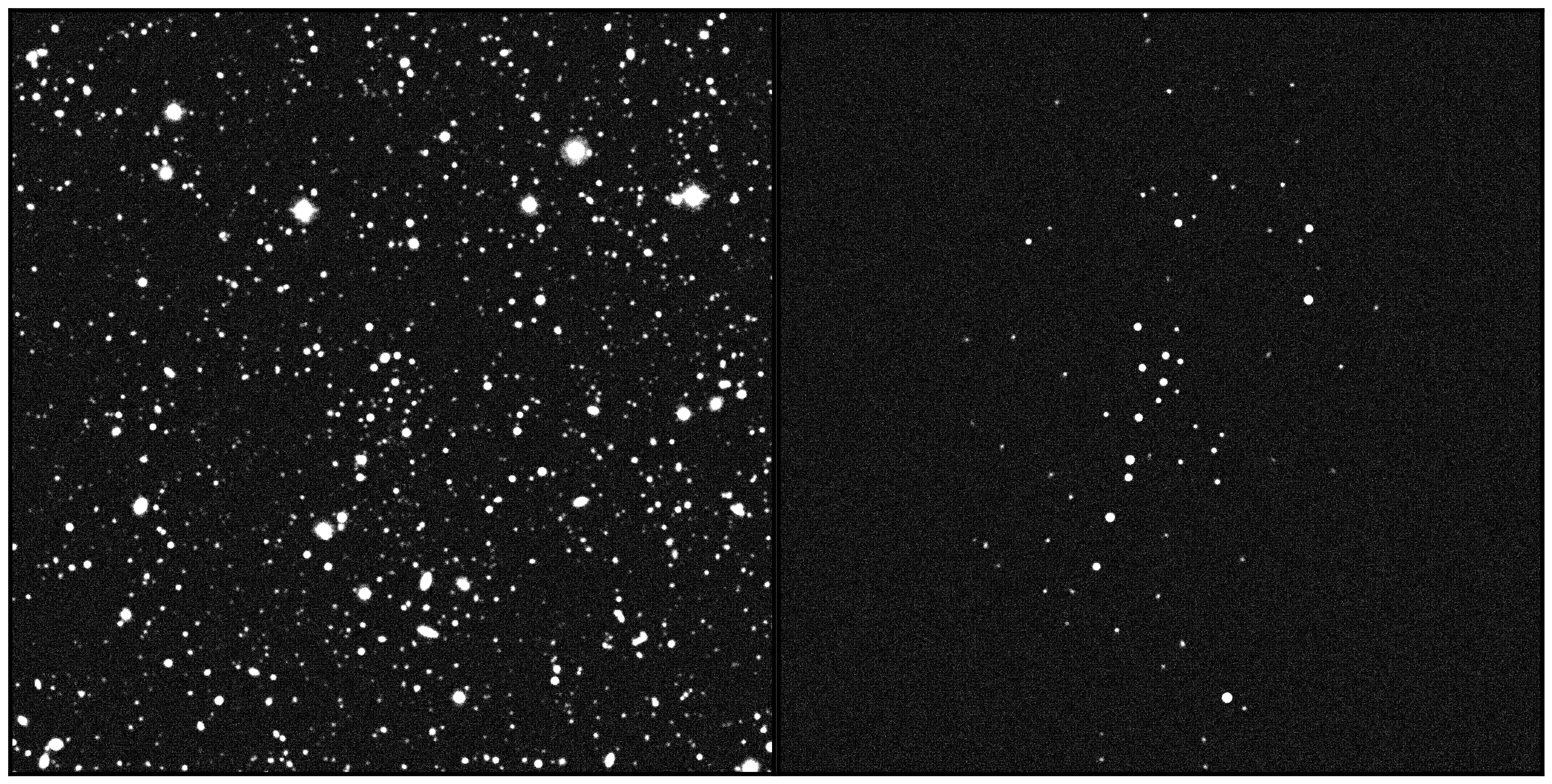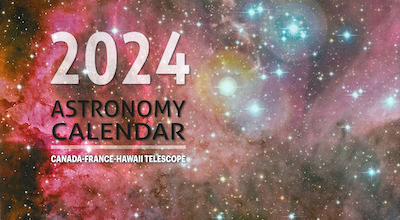The Darkest Galaxy? Discovery of the Faintest Mikly Way Satellite
Galaxies are generally thought of as majestic collections of billions of stars, often arranged on a swirling disk teeming with spiral patterns. Galaxies can also span a wide range of masses; the most massive ones contain hundreds of billions of Suns, while at the other end, galaxies as faint as a few thousand Suns are known. A recent discovery using the Canada-France-Hawai’i Telescope and W. M. Keck Observatory on Maunakea, and the Pan-STARRS Telescope on Haleakalā, is now challenging astronomers’ understanding of galaxy size.
An international team of scientists reports in The Astrophysical Journal the discovery of an ancient group of stars orbiting the Milky Way. This newly discovered satellite, known as Ursa Major 3/UNIONS 1 (UMa3/U1) consists of only sixty bright stars spread over a volume just 10 light-years across. This is minute compared to the Milky Way, which contains over ten billion stars and measures a hundred thousand light-years across. In comparison, UMa3/U1 is a feeble over-density of ancient stars and the faintest satellite of the Milky Way known to date.
The team obtained the data as part of the Ultraviolet Near-Infrared Optical Northern Survey (UNIONS) at the Canada-France-Hawaiʻi telescope (CFHT). The UNIONS project is an ambitious imaging survey of the northern sky in the optical and near-infrared conducted by three Hawai’i-based telescopes since 2017: the Canada-France-Hawaiʻi Telescope (CFHT), Japan’s Subaru Telescope on Maunakea, and the University of Hawaiʻi Institute for Astronomy (IfA) Pan-STARRS telescope on Haleakalā, Maui. The discovery of UMa3/U1 used UNIONS images from CFHT and Pan-STARRS along with spectra, or rainbows of light, from the W. M. Keck Observatory.
“Being able to detect such a tiny system, with only about sixty stars, speaks for the quality of the UNIONS dataset”, explains Simon Smith, a graduate student at the University of Victoria and lead author of the discovery paper. UMa3/U1 consists of stars that are more than 10 billion years old, twice the age of the sun and roughly two-thirds the age of the Universe . “It is either the faintest ancient star cluster known to date or the faintest and closest known dwarf galaxy ever discovered”–says Smith.
The latter scenario is the most exciting. The key difference between the two scenarios hinges on astronomers’ ability to determine the presence of dark matter in or around UMa3/U1. Unlike normal matter, dark matter appears not to emit or interact with light or electromagnetic fields. Rather, astronomers infer the presence of dark matter due to its gravitational effects on observable matter.
The presence of faint, ancient, dark matter-dominated satellites is a cornerstone prediction of Lambda Cold Dark Matter (LCDM), the leading theory for the origin of structure in the Universe. LCDM predicts that galaxies like the Milky Way have absorbed, a process known as accretion, hundreds of satellites during their formation and assembly.
Confirming the presence of dark matter in UMa3/U1 is therefore critical for determining its origin. Direct confirmation requires stellar spectra of exquisite quality taken over time, which are not yet available. But the presence of dark matter is highly likely, according to a companion study by a group of scientists from Carnegie Mellon University (CMU), the University of Victoria (UVic), and the National Research Council of Canada’s Herzberg Astronomy and Astrophysics Research Centre.
This is because UMa3/U1’s orbit takes it through the inner regions of the Milky Way, where gravitational “tidal” forces are strongest. Without the gravity of large amounts of dark matter to bind the object together, UMa3/U1 would not be able to survive in its current orbit for even a small fraction of its estimated lifetime.
“Estimating the dark matter content of a dwarf galaxy requires accurate and repeated measurements of its stellar velocities. Remarkably, the spectroscopic measurements obtained with the Keck II telescope are tentatively consistent with those predicted by LCDM. Without dark matter it is not obvious how UMa3/U1 could have been able to survive unscathed for billions of years”–says Raphael Errani, a postdoctoral researcher at CMU, and lead author of the theoretical study.
Further observations of UMa3/U1 will shed light on the object’s true identity.
“The discovery of UMa3/U1 exemplifies the power of the UNIONS survey,” says Todd Burdullis, QSO specialist at CFHT. “UNIONS observations began at CFHT in 2017. The CFHT observations combined with the total integrated data set from Pan-STARRS and observations from the Subaru Telescope create an incredibly deep data set which facilitates the discovery of the faintest of objects.”
CFHT is located on Maunakea, land of the Kānaka Maoli people, and a mountain of considerable cultural, natural, and ecological significance to the Native Hawaiian people.
Article Links:
The Discovery of the Faintest Known Mikly Way Satellite Using UNIONS, The Astrophysical Journal
Ura Major III/UNIONS 1: the darkest galaxy ever discovered?
Media Contacts
Mary Beth Laychak
Director of Communications and Community Engagement, Canada-France-Hawai'i Telescope
808-885-3121
laychak@cfht.hawaii.edu





